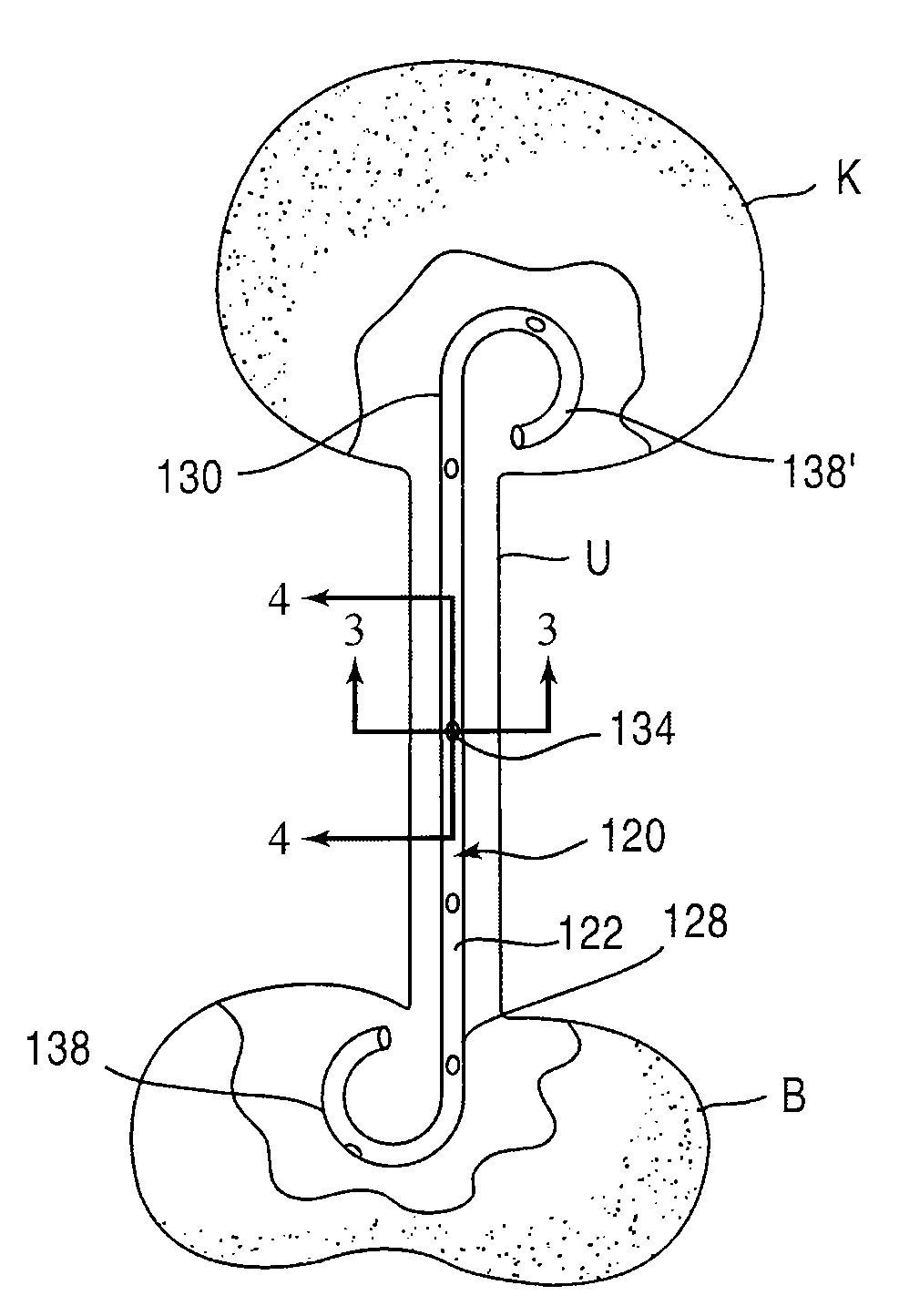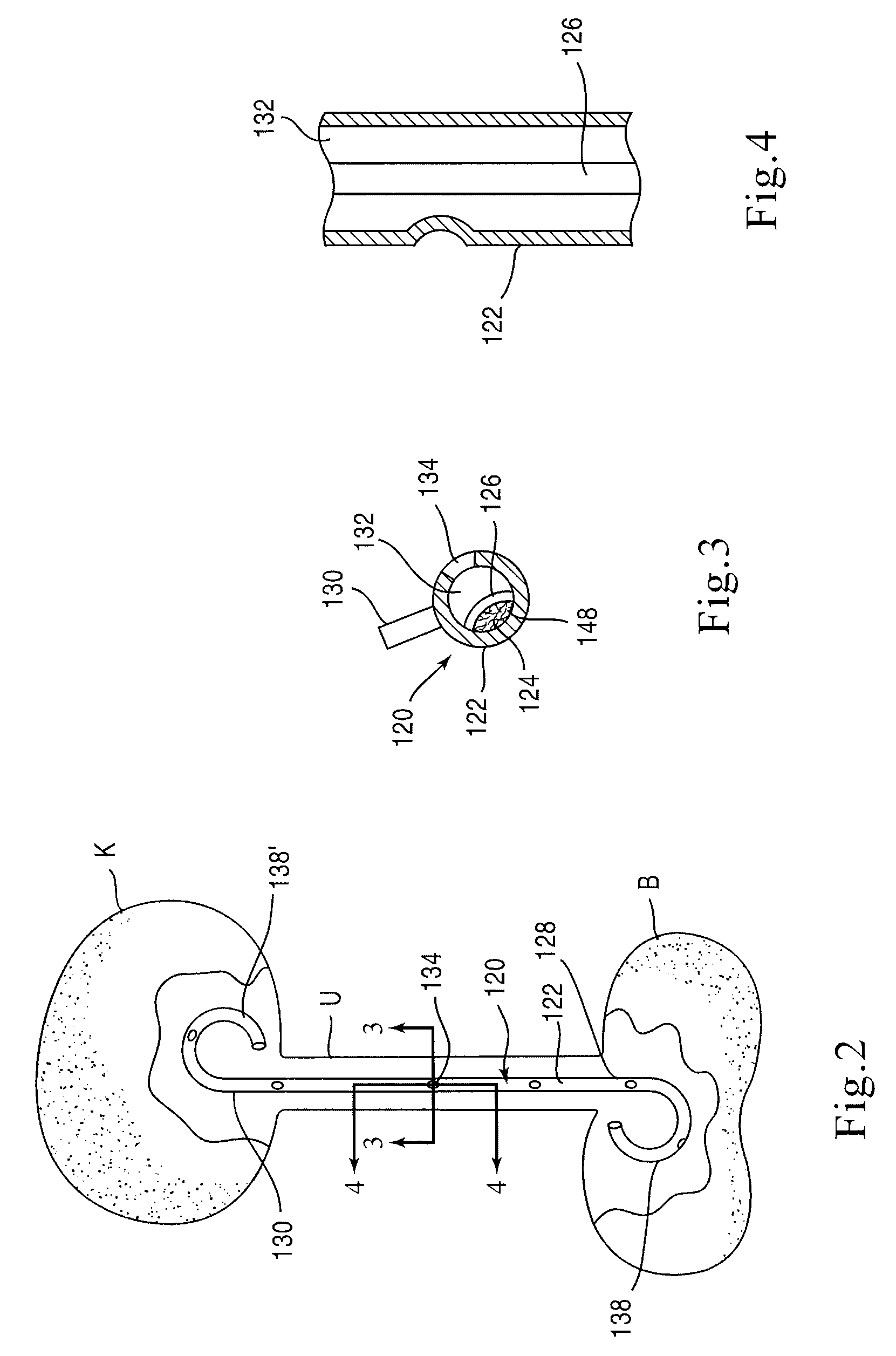Stent Having Time-Release Indicator
a technology of stent and indicator, which is applied in the field of ureteral stent having an agent, can solve the problems of patient forgetting the stent, loss of fluid passage through the stent, and possible loss of kidney function
- Summary
- Abstract
- Description
- Claims
- Application Information
AI Technical Summary
Benefits of technology
Problems solved by technology
Method used
Image
Examples
Embodiment Construction
[0025]FIG. 1 is a schematic illustration of a stent according to an embodiment of the invention. A stent 20 is configured to be placed or otherwise implanted (transuretherally or percutaneously) into a urinary tract of a mammalian body.
[0026]The stent 20 can include any of the conventional structures of a ureteral stent. In the embodiment illustrated schematically in FIG. 1, stent 20 includes an elongate body 22 defining a lumen 32 extending from a proximal end portion 28 to a distal end portion 30, through which urine may be conveyed. The elongate body 22 and lumen 32 can be configured in any of the conventional configurations for a ureteral stent. Similarly, each of the proximal end portion 28 and distal end portion 30 can be configured, or can include a retention member 38, to provide retention of the stent 20 within the urinary tract. The stent 20 can be disposed within the urinary tract of the patient such that the proximal end portion 28 is disposed within either a ureter or a...
PUM
| Property | Measurement | Unit |
|---|---|---|
| pH | aaaaa | aaaaa |
| color | aaaaa | aaaaa |
| pH | aaaaa | aaaaa |
Abstract
Description
Claims
Application Information
 Login to View More
Login to View More - R&D
- Intellectual Property
- Life Sciences
- Materials
- Tech Scout
- Unparalleled Data Quality
- Higher Quality Content
- 60% Fewer Hallucinations
Browse by: Latest US Patents, China's latest patents, Technical Efficacy Thesaurus, Application Domain, Technology Topic, Popular Technical Reports.
© 2025 PatSnap. All rights reserved.Legal|Privacy policy|Modern Slavery Act Transparency Statement|Sitemap|About US| Contact US: help@patsnap.com



